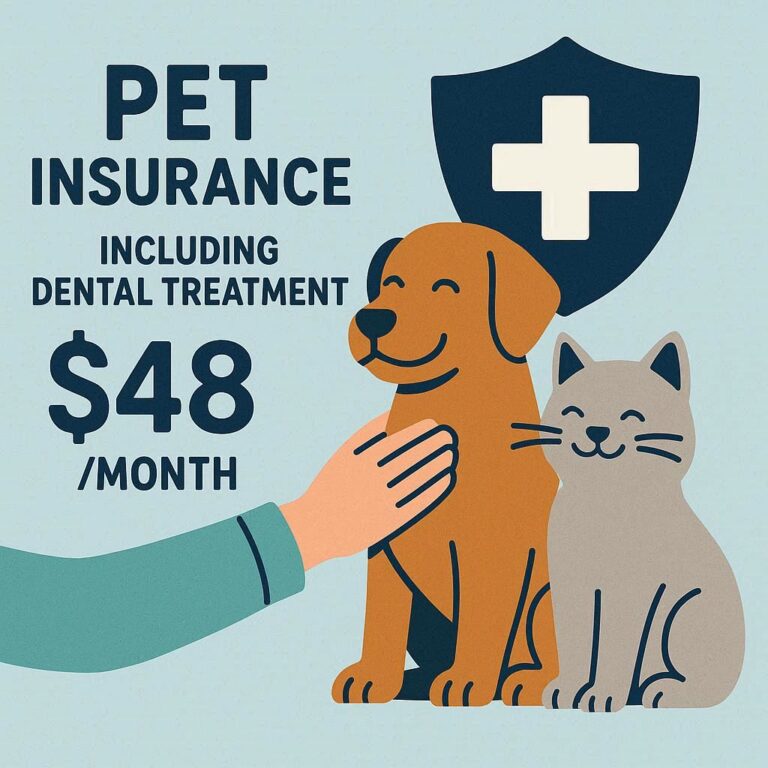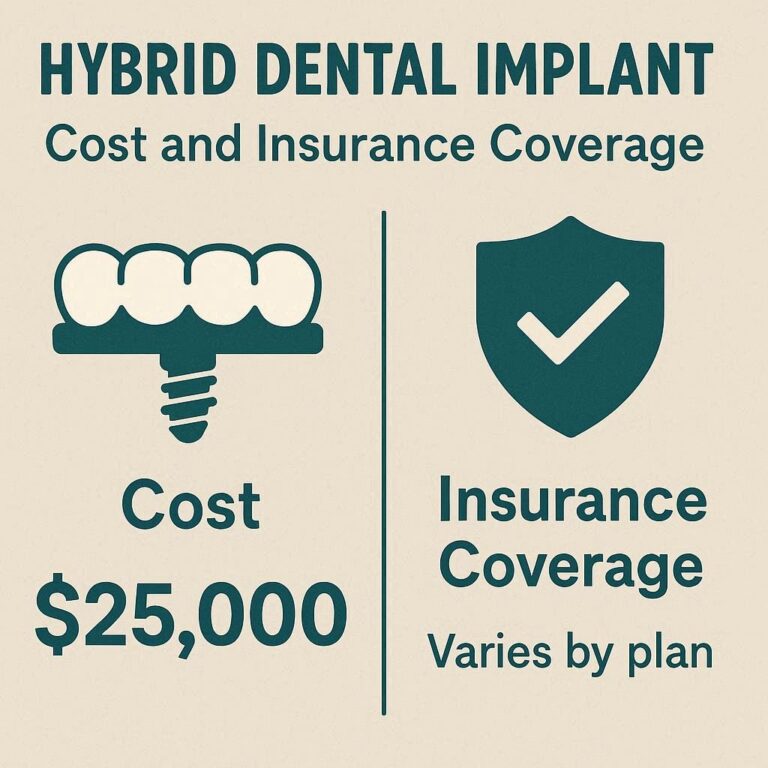A Comprehensive Guide to Understanding and Managing the Cost of 10 Cavities with Insurance
You sit in the dental chair, the bright light overhead, the taste of fluoride still faint in your mouth. The dentist enters, reviews your X-rays, and delivers the news with a sympathetic but clinical tone: “You have quite a bit of decay. It looks like we’re dealing with ten cavities that need attention.” Your heart sinks. The immediate, visceral fear isn’t just about the impending needles and drills; it’s a surge of financial panic. Ten cavities? The number alone sounds catastrophic. Your mind races, trying to calculate a number, any number, that this might cost. You have insurance—you did the responsible thing—but a nagging voice in your head whispers, “Will it be enough?”
This scenario plays out in dental offices across the country every single day. A diagnosis of multiple cavities is more than a clinical issue; it is a significant financial and emotional event. The common perception is that a cavity means a simple, inexpensive filling. But when multiplied by ten, the calculus changes entirely. The cost is not a simple multiplication of a single filling’s price. The reality is far more complex, influenced by the type of restoration required, the specific teeth involved, the nuances of your dental insurance policy, and the geographical location of your dentist. This article is designed to be your definitive guide through this labyrinth. We will move beyond the panic and provide a clear, detailed, and strategic roadmap to understanding, managing, and ultimately conquering the financial burden of treating ten cavities with dental insurance. We will demystify the language of insurance, model real-world cost scenarios, and equip you with the tools to become your own best advocate, ensuring you receive the care you need without succumbing to financial despair.

2. Deconstructing the Cavity: It’s Not Just One Procedure
To understand the cost, one must first abandon the notion that a “cavity” equates to a single, standardized procedure. Cavities, or dental caries, exist on a spectrum of severity, and the required treatment is directly proportional to the extent of the decay.
The Spectrum of Decay: From Simple to Complex
-
Incipient Lesions: These are the earliest stages of decay, often appearing as white spots on the enamel. At this stage, the damage is reversible through improved hygiene and fluoride treatments. No drilling is required.
-
Enamel and Dentin Decay: This is the classic “cavity” most people envision. The bacteria have breached the hard enamel outer layer and are progressing into the softer dentin beneath. This requires the decayed material to be removed and the tooth to be restored with a filling.
-
Deep Decay Nearing the Pulp: When decay approaches the tooth’s inner pulp chamber, which houses the nerves and blood vessels, the tooth becomes sensitive and painful. A simple filling may not suffice, as the remaining tooth structure might be weak, or the pulp may be irritated. This often necessitates a more substantial restoration like an inlay, onlay, or even a root canal followed by a crown.
-
Advanced Decay with Pulp Involvement: If the bacteria reach the pulp, it becomes infected, leading to a painful abscess. The only way to save the tooth at this stage is through a root canal procedure (endodontic therapy), which is always followed by a crown to protect the now-brittle tooth.
The Three Primary Restoration Types
The type of restoration your dentist recommends is the single greatest determinant of cost.
-
Fillings (Direct Restorations): This is the most common and least expensive option. The dentist removes the decay and fills the cavity with a material such as silver amalgam or tooth-colored composite resin. Composite is more aesthetically pleasing but is typically 20-50% more expensive than amalgam.
-
*Common Dental Codes: D2391 (Resin-based composite – one surface), D2392 (Resin-based composite – two surfaces), D2393 (Resin-based composite – three surfaces), D2394 (Resin-based composite – four or more surfaces).*
-
-
Inlays and Onlays (Indirect Restorations): When the cavity is too large for a filling but not large enough to warrant a full crown, an inlay or onlay is used. These are custom-made in a dental lab from porcelain, gold, or composite resin and then cemented onto the tooth. They are significantly stronger and more expensive than fillings.
-
*Common Dental Codes: D2642 (Inlay – metallic), D2643 (Onlay – metallic), D2652 (Inlay – porcelain), D2653 (Onlay – porcelain).*
-
-
Crowns (Caps): A crown is a tooth-shaped “cap” that completely encases a tooth. It is used when a tooth is severely broken down, has undergone a root canal, or has a very large filling that compromises its structural integrity. Crowns are the most expensive common restorative procedure.
-
*Common Dental Codes: D2740 (Crown – porcelain fused to high noble metal), D2750 (Crown – full cast high noble metal), D2752 (Crown – porcelain fused to noble metal), D2790 (Crown – full cast noble metal).*
-
The Role of Location: Anterior vs. Posterior Teeth
The location of the cavity also impacts the cost and procedure choice. Fillings on front teeth (anterior) are almost always done with tooth-colored composite for aesthetic reasons, which is more expensive than amalgam. Furthermore, because they are smaller and bear less force, the treatment is often straightforward. Back teeth (posterior – molars and premolars), however, are broader, have multiple cusps, and endure tremendous chewing forces. A large cavity in a molar is far more likely to require an onlay or crown to prevent it from fracturing.
3. The Anatomy of a Dental Insurance Policy: Your Financial Lifeline
Dental insurance is not a magical shield that makes all dental costs disappear. It is a cost-sharing agreement with very specific rules, limitations, and ceilings. Understanding its core components is non-negotiable for financial planning.
Premiums, Deductibles, and Annual Maximums: The Holy Trinity of Cost
-
Premium: The monthly or annual fee you pay to the insurance company to maintain your coverage. This is a fixed cost, regardless of whether you use any services.
-
Deductible: The amount you must pay out-of-pocket for covered services before your insurance begins to contribute. This typically resets every calendar year. A common individual deductible is $50-$100.
-
Annual Maximum (or Benefit Maximum): This is the most critical figure for someone with ten cavities. It is the total amount your insurance will pay for covered services within a benefit year. Once you hit this cap, you are 100% responsible for all further costs. The industry standard for many plans is shockingly low, often $1,000, $1,500, or $2,000. This number has remained largely stagnant for decades, while dental costs have steadily risen.
Understanding PPOs, HMOs, and Fee-for-Service Plans
-
PPO (Preferred Provider Organization): The most common type. You have the freedom to see any dentist, but you pay less if you use a dentist within the insurance company’s “preferred” network. These network dentists have agreed to the insurer’s negotiated (lower) fees.
-
HMO (Health Maintenance Organization) or DHMO: You must receive care from a dentist within the HMO’s network. There are no annual maximums or deductibles in the traditional sense, but you pay a fixed copayment for each service. Your choice of providers is severely restricted.
-
Indemnity (Fee-for-Service) Plans: These offer the most freedom, allowing you to see any dentist. The insurance company pays a set percentage of its “usual, customary, and reasonable” (UCR) fee, regardless of what your dentist charges. These are becoming increasingly rare.
The Payer of Last Resort: Why Your Insurance Company Isn’t Your Friend
It is crucial to internalize that the insurance company’s primary goal is to manage its own risk and minimize its payouts. They are not a partner in your health; they are a business. They will only pay for the least expensive acceptable treatment to fix a problem. For example, if a tooth could be treated with either a filling or a crown, they will only cover the cost of the filling, leaving you to pay the difference if you and your dentist agree the crown is clinically superior.
UCR Rates vs. Negotiated Fees: The Secret to Pricing
This is where the rubber meets the road in terms of your out-of-pocket costs.
-
UCR (Usual, Customary, and Reasonable): A fee an insurance company deems “reasonable” for a service in a specific geographic area. It is often lower than what many dentists actually charge.
-
Negotiated Fee: The pre-arranged fee that an in-network PPO dentist has agreed to accept as payment in full for a specific service. The dentist bills the insurance company, and the insurance pays its percentage of this negotiated fee. You are only responsible for your coinsurance percentage of this lower, negotiated fee.
*Example: A crown has a “sticker price” of $1,500. Your insurance UCR for a crown is $1,200. If you are out-of-network, the insurance will calculate its 50% payment based on $1,200 ($600), leaving you responsible for the remaining $900 ($1,500 – $600). If you are in-network and the negotiated fee is $1,100, the insurance pays 50% of that ($550), and you pay the other 50% ($550). By being in-network, you save $350 on this single procedure.*
4. A Real-World Cost Breakdown: Modeling 10 Cavities
Let’s move from theory to practice. The cost of ten cavities is not 10 x $200 = $2,000. It is entirely dependent on the mix of procedures required. We will model three common scenarios. For these models, we assume the patient has a typical PPO plan with a $1,500 annual maximum, a $50 deductible, and 100% coverage for preventive care, 80% for basic procedures (fillings), and 50% for major procedures (crowns, root canals). We assume the patient uses an in-network dentist.
Detailed Cost Analysis of 10 Cavities With and Without Insurance
| Scenario | Procedure Description | Quantity | Avg. Negotiated Fee (In-Network) | Total Procedure Cost | Insurance Pays (After Deductible) | Patient Pays (Out-of-Pocket) | Notes |
|---|---|---|---|---|---|---|---|
| Scenario 1: Best-Case | 1-Surface Composite Filling | 10 | $175 | $1,750 | $1,360 (80% of $1,700) | $390 | Deductible met on first filling. Insurance pays 80% of remaining $1,700. Total cost stays under annual max. |
| Scenario 2: Mixed-Reality | 2-Surface Composite Filling | 6 | $225 | $1,350 | $1,040 (80% of $1,300) | $1,460 | This illustrates the “max-out” effect. Fillings use up most of the annual max. The crown is covered at 50%, but the patient pays almost the entire cost due to the depleted maximum. |
| Porcelain-Fused-to-Metal Crown | 2 | $1,100 | $2,200 | $460 (Remaining from $1,500 max) | $1,740 | ||
| Subtotals | 8 | $3,550 | $1,500 (Maxed Out) | $3,200 | |||
| Scenario 3: Worst-Case | Root Canal (Molar) | 2 | $1,200 | $2,400 | $0 (Max exceeded) | $2,400 | Insurance is effectively useless here. The annual max is exhausted by the initial procedures, leaving the patient responsible for the entire cost of the complex root canals and crowns. |
| Core Buildup | 2 | $350 | $700 | $0 (Max exceeded) | $700 | ||
| Crown (each) | 2 | $1,100 | $2,200 | $0 (Max exceeded) | $2,200 | ||
| 2-Surface Fillings | 6 | $225 | $1,350 | $1,040 (80% of $1,300) | $310 | ||
| Subtotals | 12 | $6,650 | $1,500 (Maxed Out) | $5,610 |
Note: These are illustrative estimates. Actual fees vary significantly by region and practice.
Analysis of the Scenarios:
-
Scenario 1 is manageable. The patient’s out-of-pocket cost is under $400 because all procedures are basic and covered at a high percentage, and the total cost does not severely exceed the annual maximum.
-
Scenario 2 is the rude awakening. The patient’s out-of-pocket cost skyrockets to over $3,000, not because the insurance paid less, but because the annual maximum was reached. The insurance company fulfilled its contractual obligation by paying $1,500, and then stopped. The patient is left with the balance.
-
Scenario 3 is a financial catastrophe. The need for major procedures like root canals and crowns, which are costly and covered at a lower percentage, means the annual maximum is obliterated early on. The patient is responsible for thousands of dollars in essential care.
5. The Pre-Treatment Phase: Your Proactive Defense
Armed with the knowledge from the previous sections, you can now approach your diagnosis not as a victim, but as an informed consumer.
The Non-Negotiable: Getting a Pre-Treatment Estimate
Before you allow a dentist to begin any non-emergency work, you must request a pre-treatment estimate (also known as a pre-determination or pre-authorization). This is a formal submission from your dentist’s office to your insurance company outlining the proposed treatment plan and associated codes. The insurance company will then process this and send back a document stating exactly what they will cover and what your patient portion will be. This is your financial bible. It prevents surprises and allows you to plan accordingly.
Reading Your Explanation of Benefits (EOB) Like a Pro
The EOB is not a bill. It is a statement from your insurer explaining what services were provided, what the dentist charged, what the “allowed amount” (negotiated or UCR fee) was, what the insurance paid, and what you owe. Compare the EOB against the pre-treatment estimate and your dentist’s bill to ensure everything matches.
The Treatment Plan: Your Roadmap and Financial Blueprint
Your dentist will provide a detailed treatment plan. Sit down with the office manager or financial coordinator and go through it line by line. Ask questions:
-
“Which of these procedures are considered basic, and which are major?”
-
“Can you provide the ADA code for each procedure?”
-
“Based on my insurance, what is my estimated out-of-pocket cost for each item?”
-
“Are there alternative treatment options that might be more cost-effective?”
6. Maximizing Your Insurance Benefits: A Strategic Approach
When facing a large amount of dental work, you need a strategy, not just a schedule.
The “Use-It-or-Lose-It” Annual Maximum
Your annual maximum does not roll over. If you have unused benefits in December, they vanish on January 1st. This is a powerful tool for planning.
Staggering Treatment Across Plan Years
This is the single most effective strategy for managing the cost of ten cavities. If you are diagnosed in, say, October, and your plan year resets on January 1st, do not get all the work done at once.
-
The Plan: In October/November, have the most urgent cavities treated—perhaps the four or five that are most severe. This will likely use up your $1,500 maximum for the current year. You pay your deductibles and coinsurance. Then, in January, once your new annual maximum is available, you schedule the remaining five or six cavities. You have now effectively doubled your available insurance benefits from $1,500 to $3,000, drastically reducing your total out-of-pocket expense. This requires coordination with your dentist to prioritize treatment.
The Power of In-Network Providers
As demonstrated in the cost analysis, using an in-network dentist locks you into their negotiated fees, which are almost always significantly lower than the standard fees of an out-of-network provider. The savings can be substantial.
7. When Insurance Isn’t Enough: Navigating the Financial Gap
For many, even with strategic planning, the out-of-pocket cost for ten cavities can be daunting. Do not despair; there are options.
Dental Savings Plans: An Alternative to Insurance
These are not insurance. You pay an annual membership fee (e.g., $100-$200 for an individual) to access a network of dentists who have agreed to provide services at a discounted rate. There are no annual maximums, deductibles, or waiting periods. For major work, the discount can be 20-50%. It can be a viable supplement or alternative, especially if you are already maxing out your insurance.
In-Office Payment Plans and Third-Party Financing
Many dental offices understand the financial burden and offer in-house payment plans. Alternatively, they may partner with third-party healthcare financiers like CareCredit or Sunbit. These work like credit cards specifically for medical and dental expenses. The key is to look for promotional periods with 0% interest if paid in full within a specified time (e.g., 6, 12, or 18 months). Read the terms carefully, as deferred interest can be brutal if not paid off in time.
Dental Schools and Community Health Centers
Dental schools need patients for their students to train on. The cost of care is typically 30-60% lower than in private practice. The trade-off is that appointments are much longer, as every step is checked and supervised by licensed faculty. Community Health Centers (FQHCs) provide sliding-scale fees based on your income and are an excellent safety-net resource.
8. The Long-Term View: Prevention as the Ultimate Cost-Saver
The experience of being diagnosed with ten cavities should be a watershed moment. It is a clear signal that your current preventive strategies have failed. The best way to manage the cost of dental care is to avoid needing it in the first place.
The True Cost of Neglect: From Fillings to Extractions and Implants
Consider the progression:
-
A small cavity: A $175 filling.
-
An ignored cavity: Becomes large, requiring a $1,100 crown.
-
An ignored large cavity: Infects the pulp, requiring a $1,200 root canal and the $1,100 crown ($2,300 total).
-
An ignored infected tooth: Requires a $300 extraction, leaving a gap.
-
A gap: Leads to shifting teeth and bone loss, eventually requiring a $3,000-$5,000 dental implant and crown to restore function.
The financial logic of prevention is irrefutable.
Building an Unbreakable Oral Hygiene Routine
-
Brushing: Twice daily for two minutes with a fluoride toothpaste. Consider an electric toothbrush for more effective plaque removal.
-
Flossing: Daily. This is non-negotiable. It removes the plaque between teeth where brushes cannot reach—the site of most cavities in adults.
-
Fluoride Rinse: A daily over-the-counter fluoride mouthwash can help remineralize weak spots.
The Role of Diet and Professional Cleanings
-
Diet: Limit sugary and acidic foods and drinks. When you do consume them, do so with meals rather than grazing throughout the day. Water is your mouth’s best friend.
-
Professional Cleanings: Biannual cleanings and check-ups are the cornerstone of preventive care. They remove hardened plaque (tartar) that you can’t remove at home and allow for the early detection of problems when they are small and inexpensive to fix. Your insurance typically covers these visits at 100%.
9. Conclusion: Empowering Yourself in a Complex System
The diagnosis of ten cavities is a serious and costly dental health event, but it is not insurmountable. The path forward requires a shift from panic to proactive management. By thoroughly understanding the nature of the required procedures, the intricate and often limiting structure of your dental insurance policy, and the strategic options available for financing, you can navigate this challenge effectively. The ultimate takeaway is that in the complex dance between clinical need and financial reality, the most powerful player is an informed and empowered patient.
10. Frequently Asked Questions (FAQs)
Q1: My dentist says I need a crown, but my insurance will only pay for a large filling. Should I go with the cheaper option?
A: This is a clinical decision with financial implications. While the filling is cheaper upfront, if your dentist believes the tooth lacks the structural integrity to support a filling long-term, it could fracture, leading to the need for a root canal and crown later—at a much higher total cost. Trust your dentist’s clinical judgment over the insurance company’s cost-saving preferences. Get a second opinion if you are uncertain.
Q2: Can I negotiate the price with my dentist, especially if I’m paying a large amount out-of-pocket?
A: Yes, you often can. Dental fees are not always set in stone, particularly for cash-paying patients or for large treatment plans. It is perfectly appropriate to ask, “Given the extent of this treatment, is there any flexibility in the fee, or do you offer a cash-pay discount?” The worst they can say is no.
Q3: What happens if I can’t afford to fix all ten cavities at once?
A: This is very common. Work with your dentist to prioritize. Teeth that are causing pain, have deep decay, or are at high risk of fracture should be treated first. Less severe cavities can be monitored and addressed in a phased approach, potentially spread over multiple insurance plan years to maximize benefits.
Q4: Is dental insurance even worth it for major work like this?
A: This requires a cost-benefit analysis. If your employer subsidizes most of the premium, it is almost certainly worth it, as even $1,500 in benefits is more than you’d pay in premiums. If you are buying an individual plan, calculate the annual premium plus the maximum out-of-pocket you’d still pay. Compare that to the cost of paying cash with a dental savings plan discount. For a one-time, large expense, a savings plan might be more cost-effective.
Q5: Why is the annual maximum on dental insurance so low?
A: Historically, dental insurance was designed to encourage routine, preventive care and manage the cost of minor repairs. It was never intended to be a comprehensive medical-style insurance for major, catastrophic dental work. The low maximums have persisted because it keeps premiums affordable for employers and insurers.
11. Additional Resources
-
American Dental Association (ADA): Find a dentist, learn about procedures, and understand dental codes. www.ada.org
-
National Institute of Dental and Craniofacial Research (NIDCR): A government resource for evidence-based information on oral health. www.nidcr.nih.gov
-
CareCredit: The largest third-party patient financing company for healthcare. www.carecredit.com
-
DentalPlans.com: A marketplace to compare different dental savings plans. www.dentalplans.com
-
Health Resources & Services Administration (HRSA): Find a Federally Qualified Health Center (FQHC) near you that offers sliding-scale fees. findahealthcenter.hrsa.gov
Date: September 30, 2025
Author: The DeepSeek Health & Wellness Institute
Disclaimer: The information provided in this article is for educational and informational purposes only and does not constitute professional medical or financial advice. Dental costs and insurance policies vary widely. You should always consult with a qualified dental professional for treatment advice and with your insurance provider for specific coverage details.


